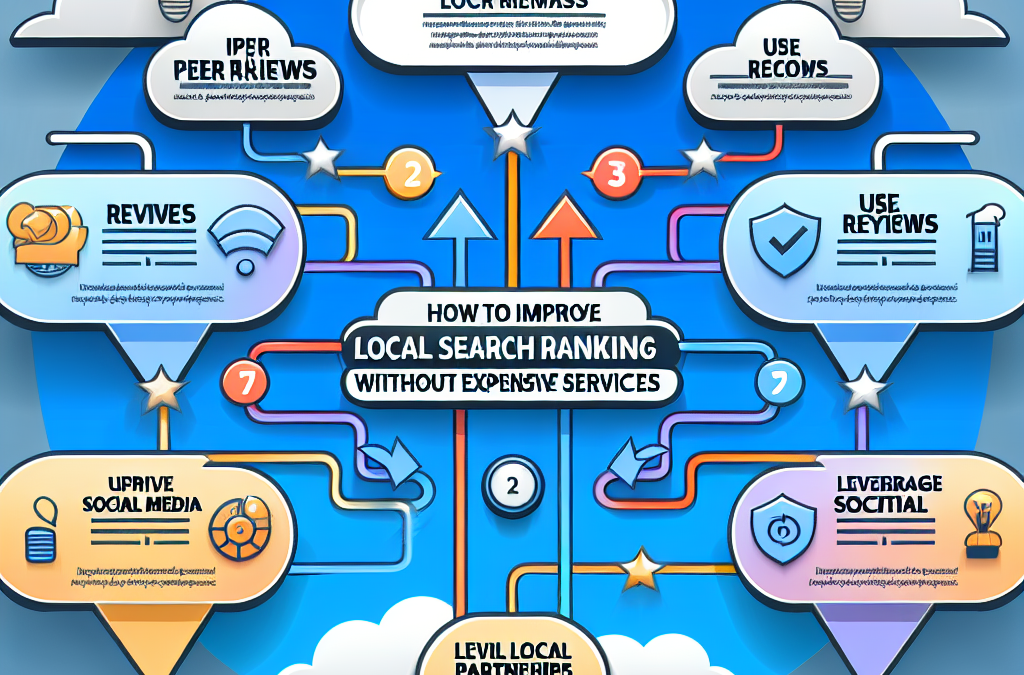Optimize Google My Business Listing
Claim Your Business
First things first, the foundation of any strong local SEO strategy is to claim your Google My Business (GMB) listing. This free tool is one of the best resources available to businesses, helping you manage how your business appears on Google Search and Maps. Trust me; it’s a game changer!
When you start, make sure you include all the crucial information—your business name, address, phone number, and website link. This not only helps customers find you, but it also tells Google that you’re a legitimate business.
Don’t forget to verify your listing! Google usually sends a postcard to your business address, which may seem old-school, but it’s an essential step for making sure your listing is genuine and trustworthy.
Complete Your Profile
Having just a basic listing is not enough; you want to fill out every section of your GMB profile. Include your hours of operation, add business categories that accurately define what you do, and never underestimate the power of a well-written business description. Think of this as your online business card.
Use high-quality images that represent your business—people love visuals! Multiple photos showing your services, staff, and even the location can really help potential customers get a feel for who you are and what you do.
Regularly updating your profile with new information, promotions, or events shows Google and users that you’re active and engaged in your community.
Encourage Customer Reviews
Good reviews can seriously elevate your business! After all, they’re like modern-day word-of-mouth. Encourage happy customers to leave reviews on your GMB listing. You might be surprised at how many will take the time to share their positive experiences.
Responding to reviews—both positive and negative—also plays a critical role in local SEO. It shows that you value customer feedback and are willing to engage, making your business seem more relatable.
And let’s not forget about the long-term benefits! The more reviews you have, particularly positive ones, the higher you’ll rank in local search results. It’s a win-win!
Create Local Content
Write Blog Posts
Creating local content is a fantastic way to increase your visibility. Start writing blog posts focusing on local events, news, or topics relevant to your community. Not only does it provide value to your audience, but it helps you boost your rankings for local searches.
Think about what your audience is interested in. Maybe you’re a bakery; how about a blog post on the best spots for brunch in your town? Your expertise in the field combined with local insights can make your posts unique and shareable.
And don’t forget the local keywords! Sprinkle them throughout your content without going overboard. This will help Google understand your focus area, improving your chances of showing up for local search results.
Engage on Social Media
Social media can be a powerhouse for your local business. Share your blog posts, engage with local followers, and participate in local conversations. It’s all about creating a community around your brand!
Don’t hesitate to promote your blog content on platforms like Facebook or Instagram. Use geotags to connect with local users further, and consider collaborating with local influencers who can help amplify your message.
Remember, the more active you are on social media, the better your chances of building trust and driving traffic back to your website. It’s all interconnected!
Visual Content for Local Appeal
People love visuals! Whether it’s photos or videos, using visual content can significantly enhance your local marketing strategy. Take time to create engaging videos that showcase your services in action or highlight local events.
Visual content can also be effective in blog posts. Include relevant images or infographics that catch the eye and give depth to the topics you’re discussing. Tagging local landmarks in your photos can help your content rank better, too!
By focusing on engaging visual content, you’ll attract more users, keep them on your pages longer, and ultimately increase your chances of converting them into customers! It’s really all about keeping them interested.
Use Local SEO Keywords
Integrate Local Keywords into Website Content
Knowing how to use local SEO keywords is crucial—trust me, it’s a game changer! Start by doing some keyword research to identify phrases related to your business that locals are searching for. Think “best coffee shop in [Your City Name]” or “affordable plumbing in [Your Area].”
Make sure to incorporate these keywords naturally throughout your website’s content. Use them in your headings, meta descriptions, and body content. However, don’t force them; it should read smoothly for your visitors.
By focusing on local keywords, you increase your chances of ranking higher for searches that are specifically relevant to your audience. It’s all about being visible when it counts!
Optimize Meta Tags
Meta tags are your behind-the-scenes buddies! They don’t directly impact rankings, but they play a crucial role in click-through rates. Use local keywords in your title tags and meta descriptions to give potential customers a reason to pick your site over your competitors.
Make your meta descriptions engaging and compelling. Think of it as a mini-ad for your website. It needs to clearly communicate who you are and what you offer while invoking curiosity in readers.
Keeping your meta tags concise and focused helps Google understand what your page is about—and ultimately, that could mean more visitors flocking to your site.
Conduct Competitor Analysis
Check out what your competitors are doing. Is there a keyword strategy that they excel at? Analyzing their websites can give you insights into their SEO strategy and help you identify gaps in your own efforts.
Look closely at their content, meta tags, and what local keywords they’re targeting. This can provide inspiration for your own website while keeping it uniquely yours.
Remember, conducting competitor analysis isn’t about copying; it’s about learning and evolving your strategies to stand out in an overcrowded market. Be inspired, but aim to be original!
Leverage Local Listings and Citations
Consistent NAP Information
Having consistent Name, Address, and Phone number (NAP) across all platforms is essential. Google loves consistency and clings to it as a sign of reliability. Make sure you double-check various listings and platforms—nothing screams unprofessional like an inconsistent address!
To keep your information accurate, regularly audit your listings. If you change your phone number or move locations, update those listings right away. Otherwise, you risk losing potential customers who might reach out based on outdated information.
Your NAP needs to be uniform on your website and across all third-party listings. This consistency not only helps with local rankings but also builds trust with customers looking for someone reliable.
Submit to Local Directories
Getting your business listed in smart local directories can enhance your visibility. Think Yelp, Yellow Pages, and even niche directories relevant to your industry! Ideally, being in these directories allows your business to show up in local searches.
In addition to traditional directories, explore local community boards or chamber of commerce websites to boost your local presence. Every listing can drive traffic back to your website, lessening the competition.
Keep in mind, though, it’s not just about quantity. Quality matters too. Seek reputable directories where your audience might already be searching for services like yours.
Build Quality Backlinks
Backlinks are still the holy grail of SEO! Getting links from other high-authority local sites is like receiving a thumbs-up from your peers. Reach out to local blogs or news sites for collaborations. Write guest posts or suggest link swaps.
Being mentioned in community events or features can help your business in more ways than one. It boosts your authority and signals to Google that you’re part of the local ecosystem. Plus, it can lead to traffic from different audiences!
Quality over quantity is the name of the game when it comes to backlinks. Focus on building relationships with reputable sources where your audience hangs out, and you’ll see results over time!
Frequently Asked Questions
1. How long does it take to see results from local SEO efforts?
Usually, you can start seeing improvements within a few months. But remember, SEO is a marathon, not a sprint. Consistency is key!
2. Can I do local SEO without a website?
Yes, you can leverage Google My Business, local directories, and social media. However, having a website significantly enhances your visibility and credibility.
3. Do I need to hire an expert for local SEO?
Not necessarily! Many businesses successfully manage their own SEO efforts with some time and research. Start small and learn as you go–you might surprise yourself!
4. How can I handle negative reviews on my GMB?
Always respond professionally. Acknowledge their concerns and offer to resolve the issue privately. This shows potential customers you care about feedback and are willing to improve.
5. How do I know which local keywords to target?
Utilize keyword research tools like Google Keyword Planner. Localize your searches around the services you offer and your geographic area to find relevant phrases.


